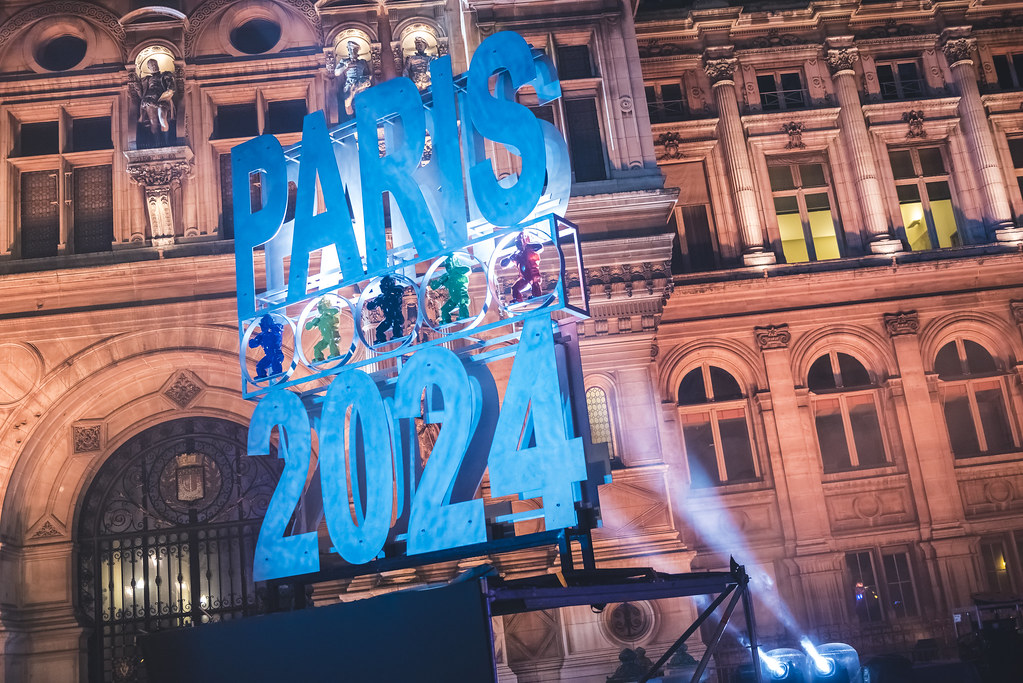The International Olympic Committee (IOC) has announced plans to cut its “indirect greenhouse gas emissions” by 50 percent by 2030. The announcement was made by IOC President Thomas Bach during the General Assembly of the Association of National Olympic Committees (ANOC), currently taking place in Greece.
That is an increase to the organization’s previous commitment to reduce emissions by 45% in line with Paris Agreement on Climate Change.
The announcement comes at the front of next week’s opening of the United Nations ClimateChange summit in Glasgow. UK Prime Minister Boris Johnson outlined four main areas of focus for the summit: coal, cars, cash, and trees.
“The climate crisis is arguably the biggest challenge humanity is facing,” said President Bach. “It is affecting all areas of our lives, including sport of course, as an important part of society. By further reducing our carbon emissions, we strengthen our contribution to the realisation of the Paris Agreement, follow the latest science on climate change, and contribute better to this global effort. We urge all other sports organisations to follow suit.”
As part of the ambitious new plan by the IOC, they have set a target of a 30% reduction by 2024 – when the next Summer Olympic Games will be held in Paris, France.
The IOC has tied the impacts of climate change directly to sport, pointing out that unreliable snow and temperatures impact winter sports, while increasing summer heat “threatens the health of athletes, event organisers and fans.”
The IOC’s announcement comes following the publication of the Sixth Assessment Report by the Intergovernmental Panel on Climate Change (IPCC) – the leading international body for the assessment of climate change. Published in August 2021, the report found that human-induced climate change is intensifying at an unprecedented pace.
Based on the latest data from the IPCC report, all signatories to the Framework will be required to reduce their emissions by 50 percent by 2030, in order to help limit global temperature rise to 1.5˚C above pre-industrial levels. Between 1.5 degrees Celsius and 2 degrees Celsius has been set as a target by most scientists as necessary to combat the worst impacts of climate change. The 2010s already saw a 1.09˚C increase over pre-industrial levels, causing growing pessimism as to whether keeping the number below 1.5 C is possible.
While the IOC doesn’t have direct manufacturing itself, its programs and events result in a lot of emissions – through massive amounts of local and global transportation and construction of new venues. The IOC says that it plans to offset more than the remaining 50% of its emissions through the Olympic Forest project, with plans to plant around 355,000 native trees across approximately 90 villages in Mali and Senegal – host of the 2026 Youth Olympic Games.
Among the other plans of attack include using almost entirely already-built venues for the Los Angeles 2028 Games.
All upcoming Olympic Games have committed to carbon neutrality, with Paris 2024 aiming to become the first climate-positive Games even before the 2030 deadline.
- All competition venues at the Beijing 2022 Games aim to use 100 per cent renewable energy. Natural and low carbon emission CO2 refrigeration systems will be used at most of the Beijing 2022 ice venues – the first time this low climate impact technology will be used in China and at the Olympic Winter Games.
- With 95 per cent of venues pre-existing or temporary, among other measures to avoid and reduce carbon emissions, the Paris 2024 carbon footprint is expected to be half the carbon footprint of previous Olympic Summer Games. Paris 2024 will also compensate more than 100 per cent of its residual emissions and use its influence to develop long-term carbon compensation projects, becoming the world’s first Olympic and Paralympic Games with a positive contribution to the climate.
- LA28 has adopted a radical reuse approach, which means it will leverage the best of Los Angeles’ iconic sports facilities and not require a single new permanent venue to be built. LA28 has committed to incorporating meaningful sustainability measures throughout its plans as it aims to set a new standard for large-scale live events.
The IOC has also committed to making all Olympic Games “climate positive” from 2030 onwards. Each Organizing Committee for the Olympic Games will be contractually obligated to minimize and compensate its direct and indirect carbon emissions; and implement lasting zero-carbon solutions for the Olympic Games and beyond, though there remains skepticism if, when push comes to shove, the IOC will have the teeth to remove hosting duties from cities and countries that don’t adhere to those terms.


“The entire North ‘polarized’ cap will disappear in five years,” Gore predicted a decade ago.
We shouldn’t led Al Gore’s exaggerations distort our understanding of the very real climate crisis facing our globe.
Videos from NASA depicting our globes shrinking ice caps.
https://www.youtube.com/watch?v=ULEFPCIPP7Y
https://www.youtube.com/watch?v=8auMIfF50Ng
https://www.youtube.com/watch?v=_C2EeptHCY8
How are they going to do that??